Due to the overwhelming response to our post last year, we’ve decided to do a second part to the “Airsoft Guns That Should Exist” list. While some of the guns on this might have existed as expensive custom builds, or classic collectable replicas, no one (as far as we can see) is producing a standard affordable version of any of the guns below – and we think that should change.

Airsoft manufacturers should realize by now that the market needs more M4 models like we need a third wave of the COVID-19 virus. And fortunately, there have been some encouraging signs of originality recently – like LCT’s new HK33 replica series, and ARES Airsoft’s announcement about their upcoming Kel-Tec RDB replica. Originality is not dead, diversity is a good thing, and variety is the spice of life – so here’s our latest list to spice things up a bit!
1. Ultimax 100 MKIII LMG
We recently ran an article on the Surefire MGX light machine gun, which is in many ways the American successor to this Singaporean weapon designed by an engineering team led by an American. In fact, both guns were the creation of the same American – Jim Sullivan. Check out our article on the Surefire MGX to find out more about him.
As for the Ultimax, it was first adopted by the Singapore Army in 1982 and has also seen extensive use with the armed forces of the Philippines and Croatia. If it had used STANAG 5.56mm magazines and drums it might have seen even wider adoption and use – and it was probably also hindered by the fact that Singapore doesn’t exactly have an international reputation as a producer of firearms either. Nonetheless, the Ultimax 100 garnered a great reputation amongst all who have had the chance to use it. It is light and handy, its 100-round drum provides plenty of firepower downrange, and it is allegedly one of the smoothest and most pleasant firing light machine guns ever.
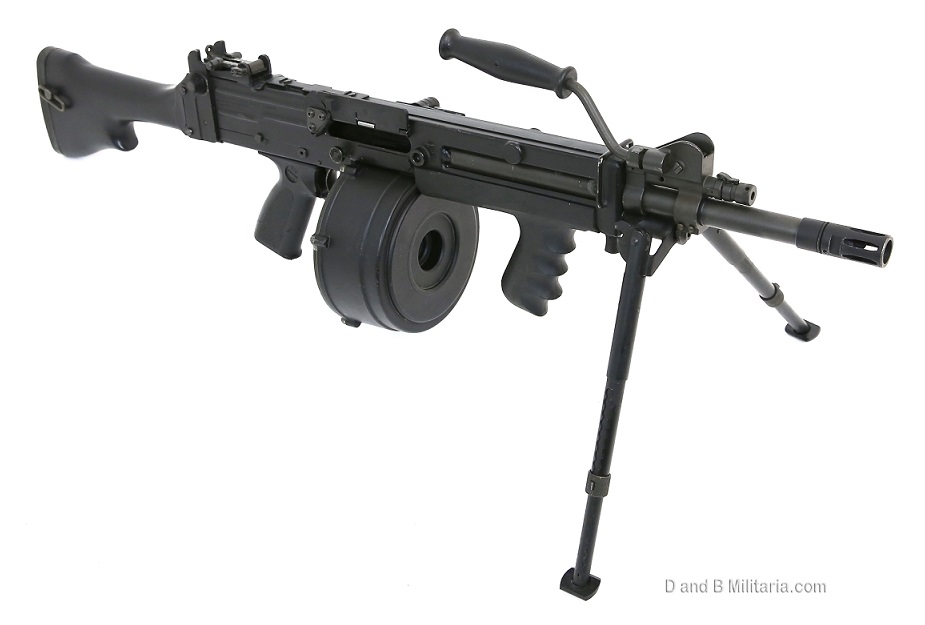
Over the years a number of different generations of the Ultimax have been produced. A MK5 version (with a folding stock, STANAG compatible magwell, and numerous Picatinny rails) was submitted to the USMC for the Infantry Automatic Rifle competition, but lost to the HK-416 derived M27 IAR. The latest version of the Ultimax is the MK8, and the STANAG magwell appears to have gone away again.
The version pictured above is the MKIII “Commando” model with a shorter quick-change barrel than the standard version. This is what could be considered the classic iteration of this light machine gun, and to make it ready for the modern airsofter it would only need a rail on the top of the receiver for an optic, and a STANAG magwell to accept the wide range of M4-compatible drum and box magazines available.
2. VIS 100 / PR-15 Pistol
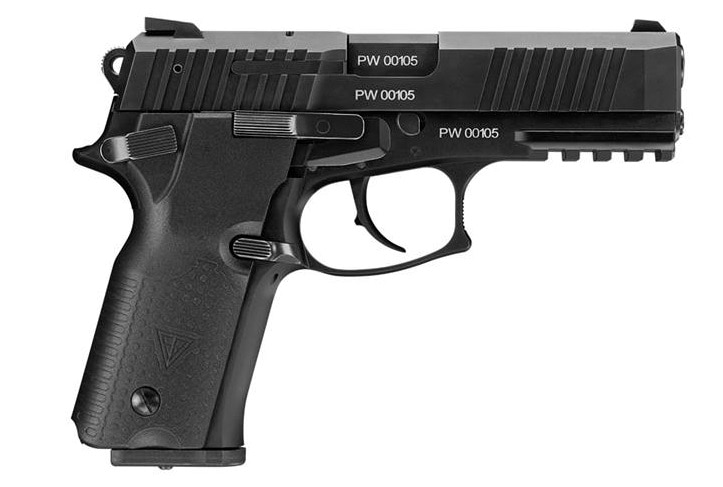
In our last list we included the Polish military’s new ‘GROT’ assault rifle (aka, FB Radom MSBS), so it’s only fitting that we include the new Polish military pistol this time to round out the set.
The VIS 100 is a semi-automatic pistol chambered for the 9×19mm Parabellum round, has a double-action/single-action trigger and features a MIL-STD-1913 compatible rail, which enables the attachment of tactical lights or laser sighting equipment. It is also fully ambidextrous, with the magazine release, slide stop and decocker lever positioned on both sides of the gun.
3. Valmet M76F Assault Rifle
The Valmet M76 was a commercial development of the Finnish armed forces standard M62 rifle in 7.62x39mm calibre. Unlike the M62, the M76 featured a stamped receiver rather than milled, and its standard calibre was 5.56x45mm – as it was intended mostly for export. It also featured a folding stock of the same rugged tubular design as the M62. A unique feature of both the M62 and M76 was that the stock tube forward of the butt plate was covered in plastic – to prevent the users face from sticking to it in extreme cold weather.

The Valmet M62 also provided the basis for the development of the famous Israeli Galil assault rifle – receiver blanks delivered from Finland were used by IMI to build the first Galil prototypes. The other claim to fame for the Valmet M71 and M76 models was that they starred in several movies as stand-ins for the AK before it became available on the commercial market.
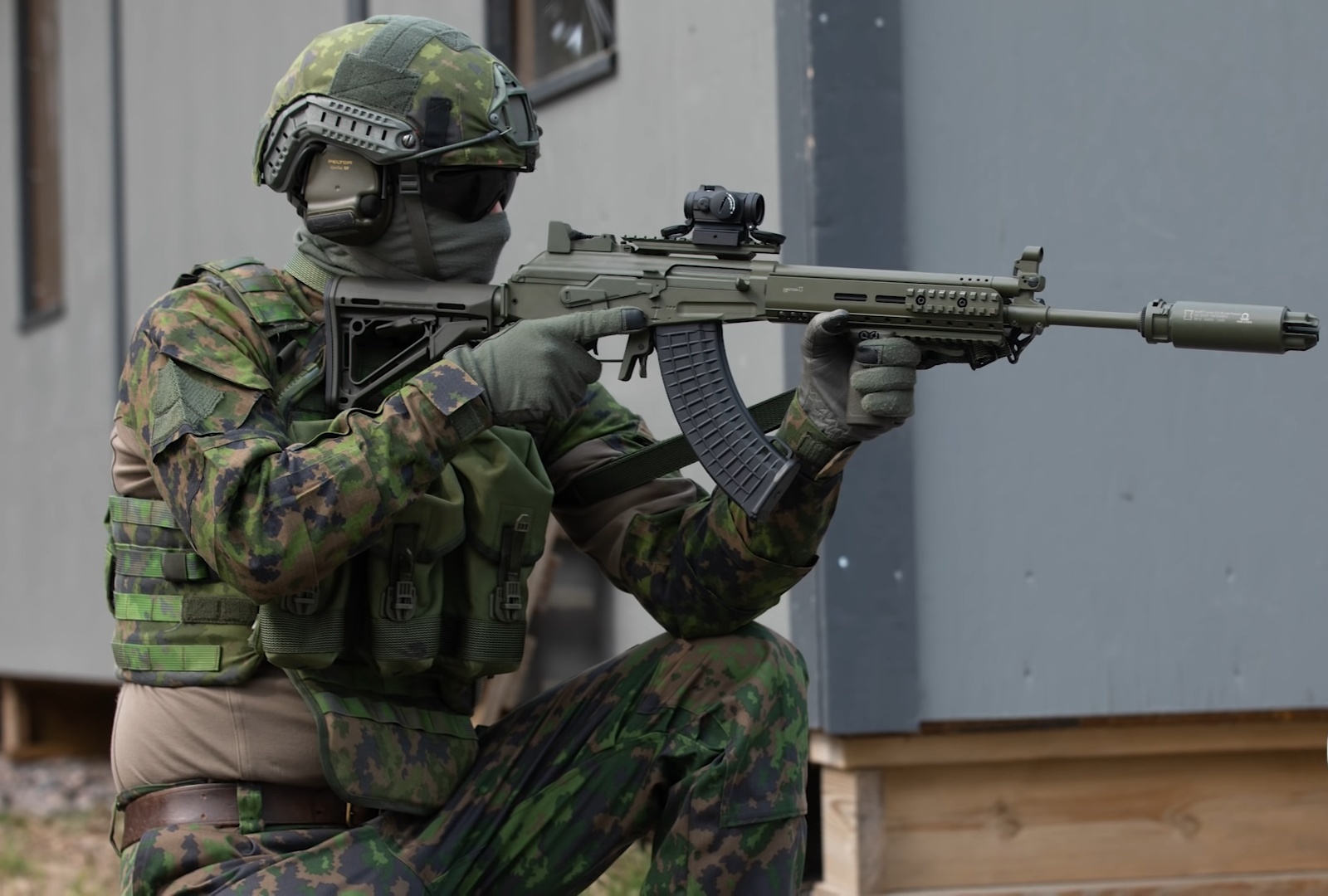
Now you might notice that there aren’t any rails for lights, sights or lasers on the M76, but the recent M62 modernization program (see above) implemented by the Finnish Defence Forces certainly provides a template for how it could be done – as does the full-length integrated top rail system of the Galil ACE. And as for magazines, King Arms Galil magazines would make a nice feeding solution. All of which goes to show that sometimes you can teach an old dog new tricks.
4. Valmet M78 AR / LSW
Since the Finns adopted the AK-derived Valmet M62 rifle, you’d think it reasonable that they would have also adopted their own version of the RPK. But they didn’t. For reasons I don’t know, the Finns adopted a 7.62x39mm, belt-fed, light machine gun that used a similar operating system as the Czech Vz.59 machine gun. Known as the KK-62 (aka., KVKK-62) light machine gun, it featured a fixed heavy barrel and a straight in-line design that fed from a 100-round “saddle bag” mounted on the right side of the receiver. The whole thing looked a bit like a belt-fed STEN gun on steroids – and was apparently never very popular with the troops.
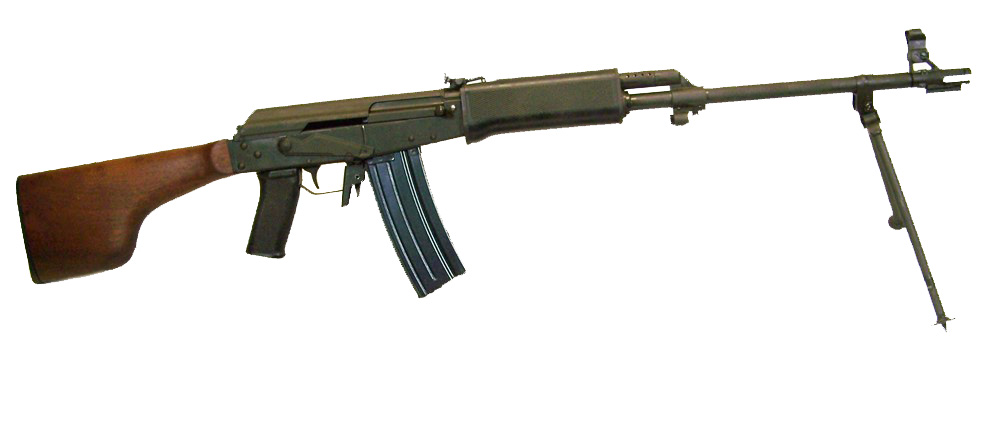
So what’s the story with the M78, Valmet’s RPK-style heavy barrelled automatic rifle seen above, how did it come about? Well it turns out that the Finnish military did in fact toy around with the idea of an RPK-style weapon at one point. Apparently there was some debate after the adoption of the M62 rifle about whether a stamped receiver and AK-style open notch sights wouldn’t have been a better way to go. So an alternative rifle with a stamped receiver, open notch sights, and an AK style sight layout was developed, called the M71 (see below).

The M71 rifle was not adopted by the Finnish Defence Forces, but it was sold abroad as a semi-auto sport rifle and was primarily available in 5.56mm and 7.62mm NATO calibres. The M78 came about as a result of testing an RPK-style variant of the M71, known as the M74 light machine gun, by the Finnish Defence Forces. When it was also rejected by the Finnish Defence Forces, Valmet developed it into a semi-auto sporter and offered it on the commercial market in 5.56mm and 7.62mm NATO. 7.62x39mm versions of the M71/S and M78 were also offered, but didn’t sell well because 7.62×39 ammunition was very hard to come by in the West in those days.
5. EM2 Rifle
A space gun with wood furniture? By Merlin’s Beard, what is this sorcery!? This is the virtually mythological EM2 rifle – also known as the Rifle No.9 Mk1 during the brief period of its adoption by the British Army in 1951.
Even before WWII had ended the British Army was researching and developing new experimental weapons to replace their venerable old Lee-Enfield rifles and Vickers machine guns – along with new cartridges to replace the powerful old .303 round as well. Development of the EM2 (Experimental Model 2) rifle, designed by a Polish immigrant, began in 1948 and was production ready 2 years later. As you can see from the photo above, the EM2 was a very radical departure from the bolt-action Lee-Enfield rifle (see below) that had defended the British Empire for over 50 years by this point in time.

The EM2 was built around a copy of the German G43 rifle’s operating system, but it bore absolutely no resemblance to either the G43 or any other rifle that had seen service up to that time. For one thing, the EM2 featured a so-called “bullpup” layout – where the action, breach and magazine are located behind the pistol grip – it featured a straight inline stock design for recoil mitigation and quicker shot placement, it fed from a 20-round detachable box magazine, it fired a new intermediate power .280 / 7mm cartridge, it included a very clever last-round-fired-bolt-hold-open mechanism that automatically released the bolt when a fresh magazine was inserted, and it also featured an integral optical sight in place of traditional iron sights. Watch the video below for a good demonstration of the rifle’s performance.
As we stated at the beginning, the EM2 was actually officially adopted as the British Army’s new standard rifle in 1950; however, timing and politics were not on its side. NATO had been formed in 1949 and the Americans were pushing hard for standardisation in small arms ammunition. Due to the particular obstinance of the American Colonel in charge of the NATO small arms ammunition program, the outstanding British 7mm round was pushed out in favor of the American’s higher-powered .308 / 7.62x51mm round. The British felt that modifying the EM2 to the American .308 would be too difficult and expensive, so they stuck to their guns and adopted it as their new rifle on 25 April 1951 as the Rifle, Automatic, Calibre .280, Number 9.
The victory for small arms independence didn’t last long however, and only 59 examples of the EM2 / Rifle No.9 were ever built. Within a year of its adoption, the new Conservative government under Winston Churchill decided that common small arms ammunition across NATO and good relations with the Americans was more important. So in 1952 the previous decision was reversed and the Belgian-developed FN FAL in 7.62x51mm was selected to be Britain’s new service rifle.
Ironically, within another decade the American’s decided that the 7.62 NATO cartridge was over-powered as a rifle cartridge and adopted an even smaller and less powerful round than the British .280, as well as a new rifle with an inline stock design. That rifle, the M16 and its derivatives, and its cartridge the .223 / 5.56x45mm round, are now potentially going to be replaced in frontline US service with a new 6.8mm round – and one of the rifles competing for that award also happens to be a bullpup, with an optical sight.
It’s probably a very long shot that an airsoft replica of this magnificently historical “what could have been” rifle will be made, but one can but hope – right?
6. L4 Bren LMG
Once again proving that sometimes you can teach an old dog news tricks, the L4 series light machine gun carried the famous Bren Gun of WWII into and through the new era of the Cold War.
The original Bren gun was a licensed version of the Czechoslovak ZB-33 light machine gun, which was an improved version of the ZB-26. The name Bren was derived from “Brno”, the town in Czechoslovakia where the ZB-26 was designed, and “Enfield”,the town where the British Royal Small Arms Factory was located.
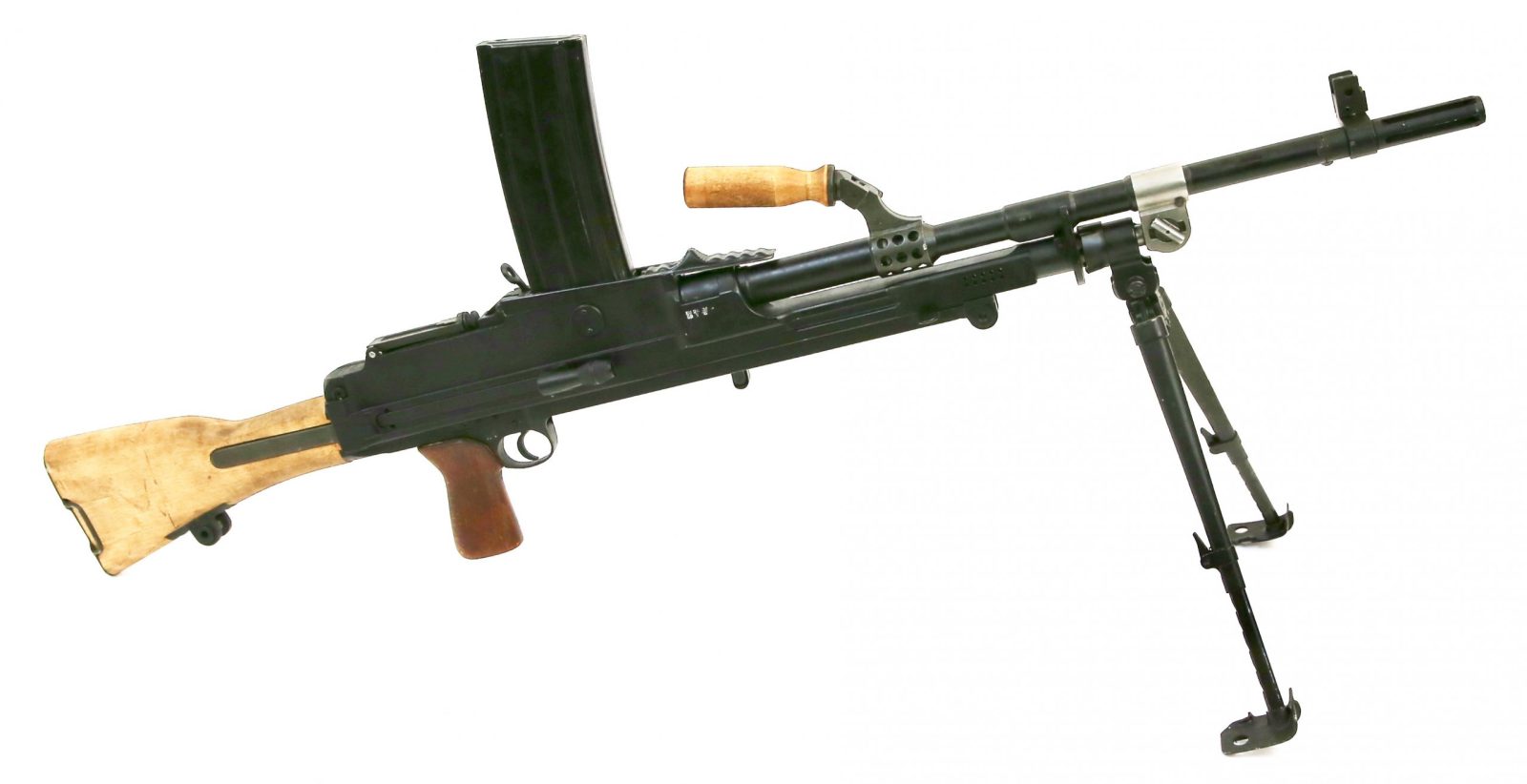
British Army officials had tested the ZB-26 during firearms trials in the 1930s and had been favorably impressed by it. Many other nations were also in fact very impressed by the ZB-26 series of light machine guns, and the gun would go on to see service in various calibres with more than 30 countries over its lifetime.
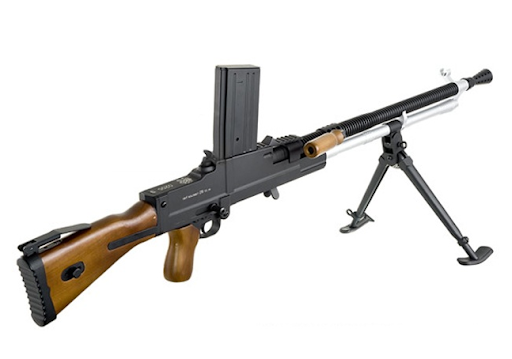
While the ZB-26 has been available for a while as and airsoft AEG (see photo above), to the best of our knowledge no-one has released a factory-produced replica of any of the models of the British Bren. This must surely rank as a gross oversight on the part of airsoft manufacturers, considering the vast numbers of Bren guns built during WWII and which saw service with Britain, Commonwealth and Allied countries for many decades.
In the 1950s, many Bren guns were modified to accept the 7.62×51mm NATO cartridge fed from a 30-round magazine with a slight curve. The L4 magazine was interchangeable with the L1A1 SLR magazine, so the L4 Bren could also feed from standard 20-round SLR magazines, or from the 30-round straight-walled magazines used by the Australians and Canadians. The flash suppressor on the L4 was also changed from the original cone style to a slotted type similar in appearance to the SLR and L7 GPMG flash suppressor. The L4 Bren also saw extensive service with British and Commonwealth countries for many years right up through the latter years of the 20th Century.
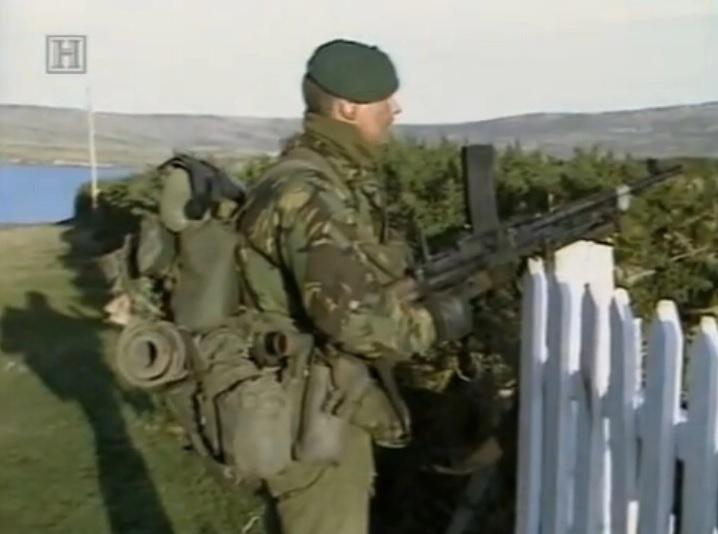
7. UZI Submachine Gun
The Uzi submachine is such an iconic design, and probably only second to the MP5 in terms of popularity and use. It didn’t age as well as the MP5 though, and neither was it ever as versatile as that platform – but what a classic!
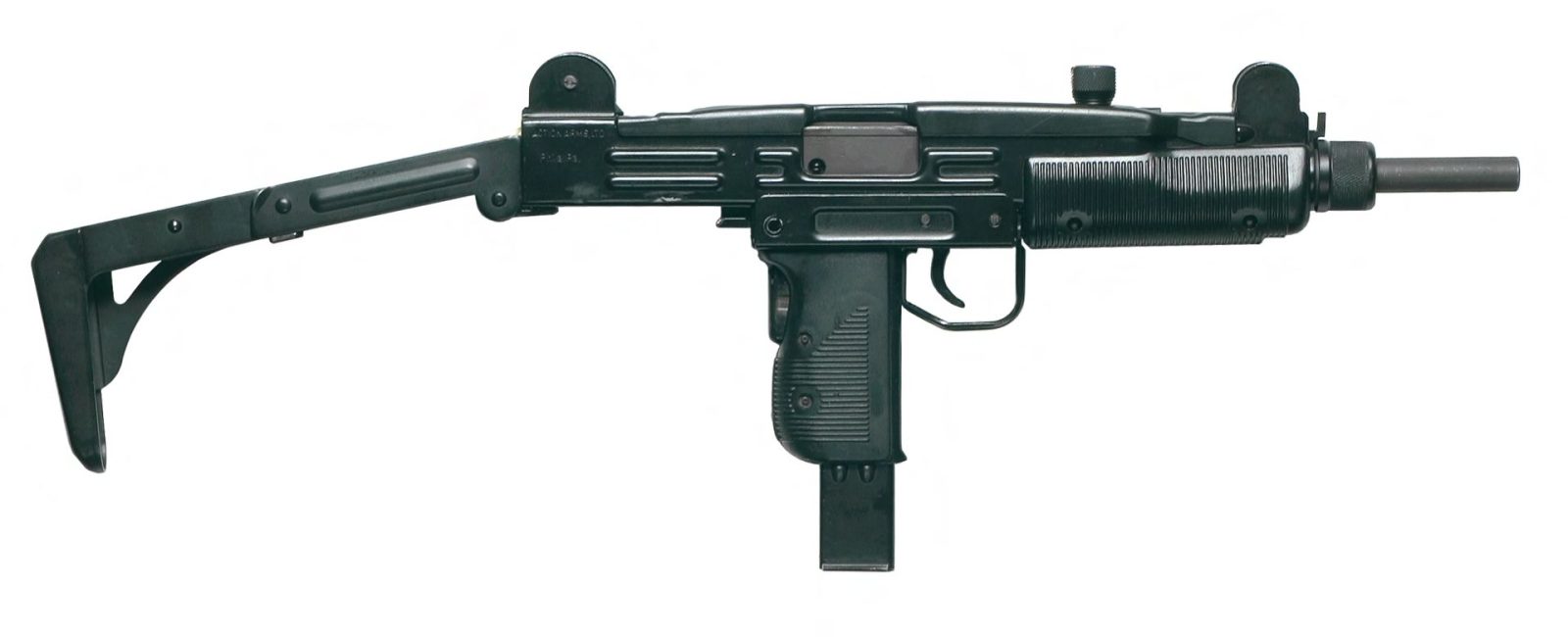
Watch any action movie from the 1980’s and you’re bound to see an Uzi in action. From Charles Bronson in “Raid On Entebbe”, through Arnie in “The Terminator”, and ending with Chuck Norris dual-wielding 2 Mini-Uzis – the chunky plumber’s nightmare from Israel seemed to be everyone’s go-to bullet hose. But then the MP5 escaped Germany’s strict firearms export restrictions and stole the Uzi’s crown.
Nonetheless, the Uzi was quite popular in the early days of airsoft as well. Nowadays though if you want an Uzi your choices are rather limited. KWC makes a nice CO2 powered version of the Mini-Uzi, but the only version of the full-size, classic Uzi (as seen above) is an inexpensive, low-powered, full-plastic, licensed AEG made by Umarex. Why IWI and Umarex chose to go this route, instead of making a proper skirmishable, full-metal, GBB version is a mystery.
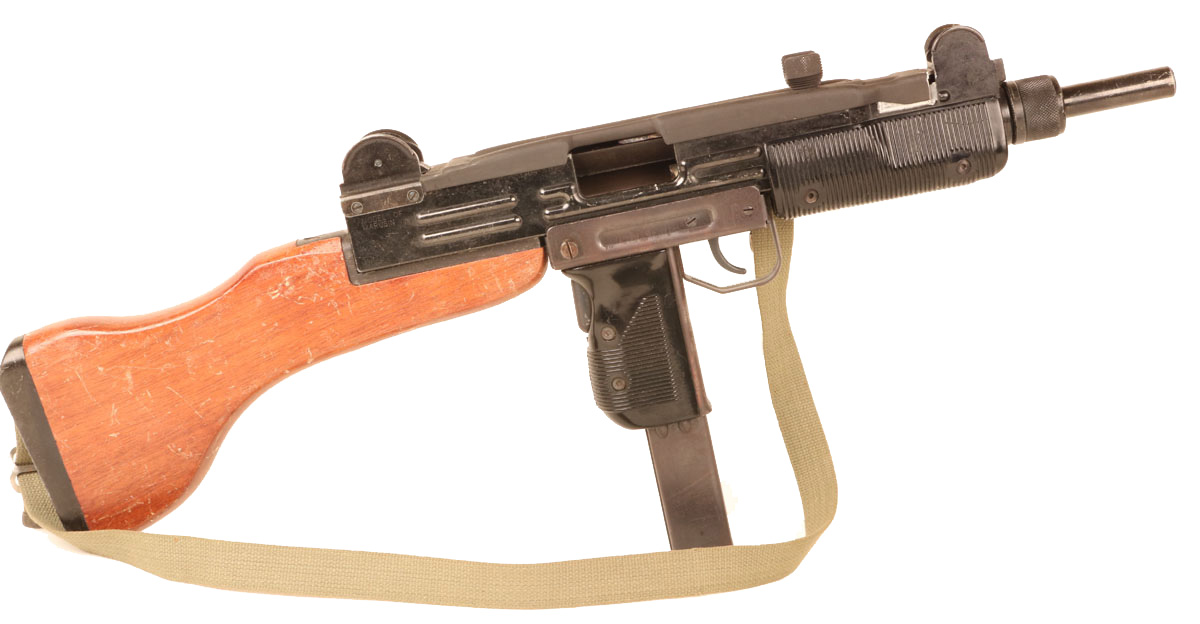
So, all we can say is that we want to see a good-quality, full-metal, Green Gas or CO2 powered replica of the classic full-sized Uzi – with both folding metal and solid wooden stock options.
8. Galil ACE Assault Rifle
The original Galil series of small arms were designed and developed in the late 1960’s, after the Israeli Defense Forces were disappointed by the combat performance of their FN FAL rifles and heavy-barreled automatic rifles. Clearly impressed by the robustness and dependability of their enemies guns, and being able to extensively test various AKs and AKMs that they had captured, the Israelis set out to find a rifle system that would perform as well as the AK to replace their FN FALs. The M16A1, Stoner 63 and HK33 were apparently all considered and evaluated, but in the end an indigenous design developed by Yisrael Galil, based on the Finnish Valmet Rk.62, rang all the right bells.
For Israeli purposes, the 7.62x39mm Rk.62 design was modified to use the standard US 5.56mm cartridge, and various other modifications and enhancements were made to create an accurate, robust, reliable, modern combat rifle unique to the IDF – the Galil. The Galil was produced in several configurations; including, Automatic Rifle Machine-Gun (ARM), Assault Rifle (AR), Short Assault Rifle (SAR), Micro-Assault Rifle / submachine gun (MAR), and 7.62mm NATO sniper rifle. For international sales, the ARM, AR and SAR variants were also offered in 7.62x51mm NATO calibre.

The Galil family would go on to see great success internationally – being adopted by South Africa, Columbia, Burma, Chile, Guatemala, Honduras, Portugal, Post-Soviet-Era Estonia, and used in varying numbers and varieties by many others. It had even come very close to becoming the new Swedish assault rifle instead of the Belgian FNC. In IDF service however its overall career was fairly short – by the early 1980’s it was almost completely (and quietly) replaced by virtually-free US-provided M16Als and Colt ‘Commando’ carbines.
Come the new century, the IDF had since adopted the bullpup Tavor as its new main assault rifle, Israeli Military Industries (IMI) had become Israeli Weapon Industries (IWI) and they began to look at market opportunities outside of Israel. Also recognizing the improvements in polymer technologies, magazine and accessory standardization – as well as the ubiquity of rail-mounted sights, lights, foregrips, bipods, etc. – IWI identified an opportunity to provide an updated, modular rifle platform that would be familiar to users of the original Galil series. This new rifle became known as the Galil ACE, or just simply ACE.
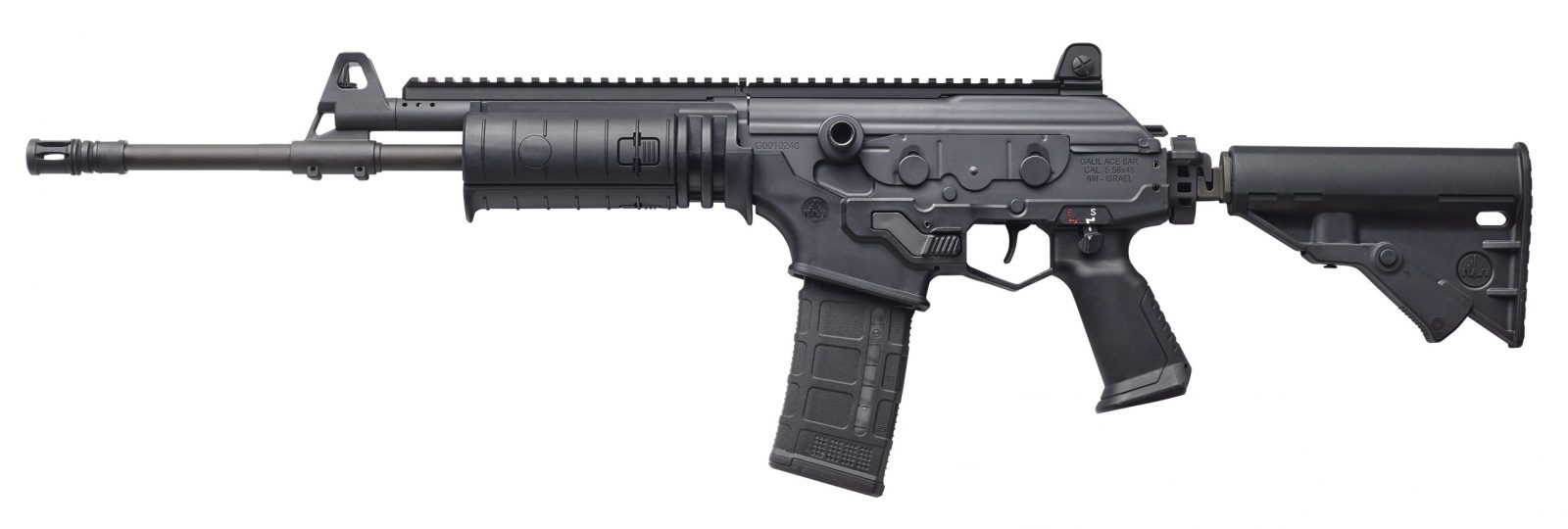
The ACE is based on the same rugged, reliable, easy-to-maintain operating mechanism of the Galil, but the rifle makes much greater use modern polymer materials to reduce weight, and the Galil sniper rifle model trigger group for improved accuracy. The ergonomics and controls of the ACE are virtually identical to the original Galil, but the charging handle has been moved to the left side of the receiver, and the ambidextrous fire controls have been improved. Other features include an M4-style adjustable sliding stock that also folds to the right for additional compactness, as well as a full-length Picatinny rail along the top of the receiver cover and gas tube, and short rails at the 3-6-9 o’clock positions on the front handguard.
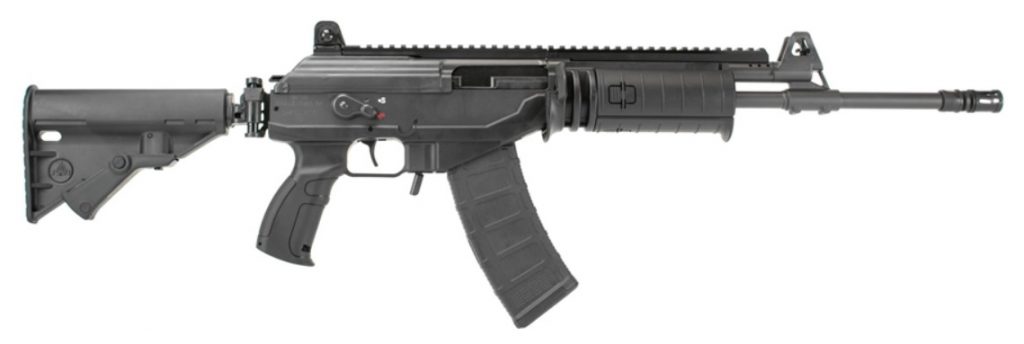
In 5.56mm calibre the standard ACE feeds from traditional Galil magazines, whilst the ACE-N version uses STANAG M16/M4 compatible magazines, with a last-round-fired-bolt-hold-open feature as well. IWI offers the Galil ACE in 3 different barrel / gas tube lengths (equivalent to the AR, SAR and MAR models of the original Galil). Besides the 5.56mm NATO version, IWI also offers a 7.62mm NATO and 7.62x39mm Russian version – feeding from 25-round Galil sniper rifle magazines, and from standard pattern AK and AKM magazines respectively.
Many international users of the original Galil have now adopted the modernized ACE to replace it, and the People’s Army of Vietnam has adopted the 7.62x39mm version of the ACE to replace its aged inventory of AKs and AKMs.
9. Negev NG-5 LMG
The Negev (aka, NG-5) is a 5.56mm NATO light machine gun designed and developed by IMI/IWI in the late 80’s to early 90’s. It features a quick-change barrel and can be fed from a STANAG box magazine or from a belt. Although the design of the Negev appears to have been influenced by the FN MINIMI / M-249 SAW that was adopted by the US Army in the early 80’s, the Negev is a lighter and more streamlined weapon, and features a much more sensible and functional dual-feed set-up.
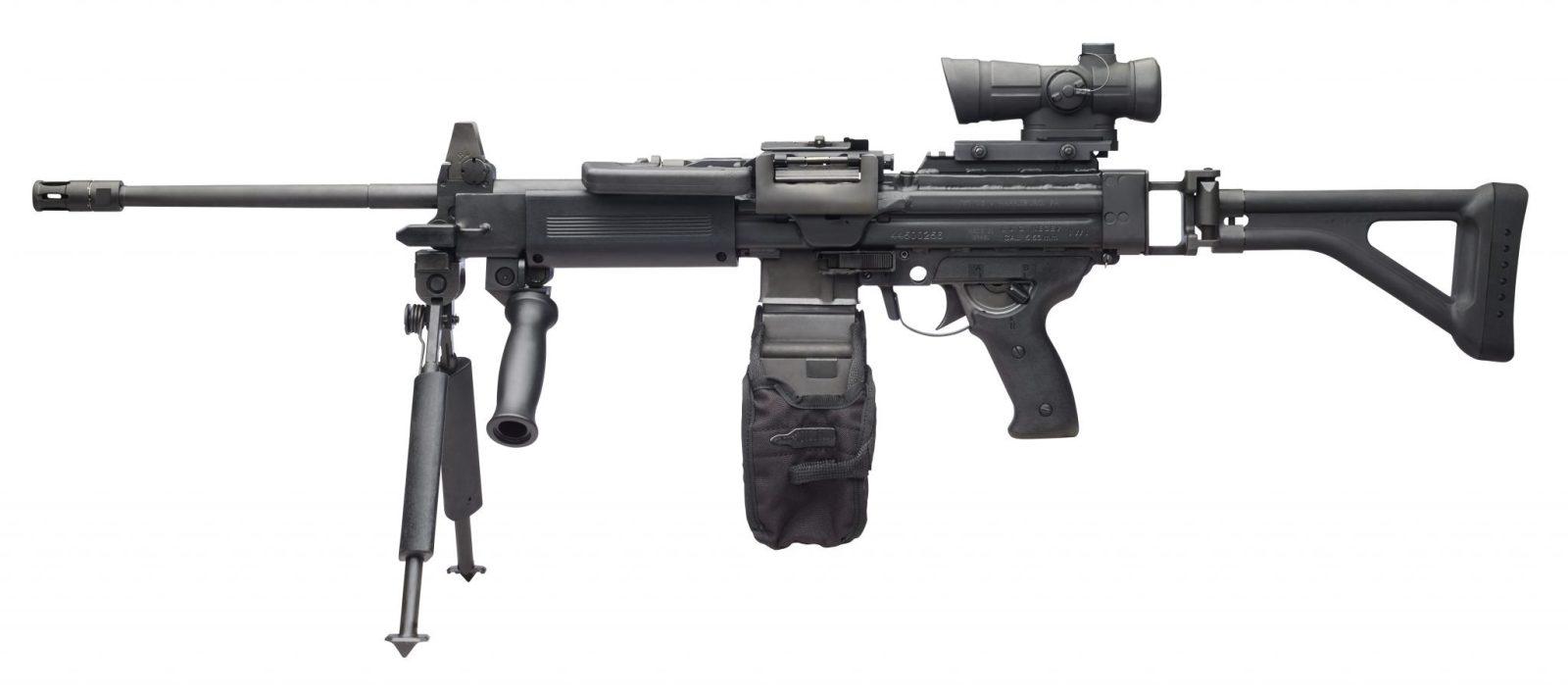
The Negev NG-5 has proven to be exceptionally robust and reliable in operational use, and has been in service with the IDF since 1997. Unlike many other light machine-guns the Negev is a selective-fire weapon, having both a semi-auto and full auto firing modes. In addition to the long-barreled standard infantry version there is also a short barreled ‘commando’ version of the Negev.
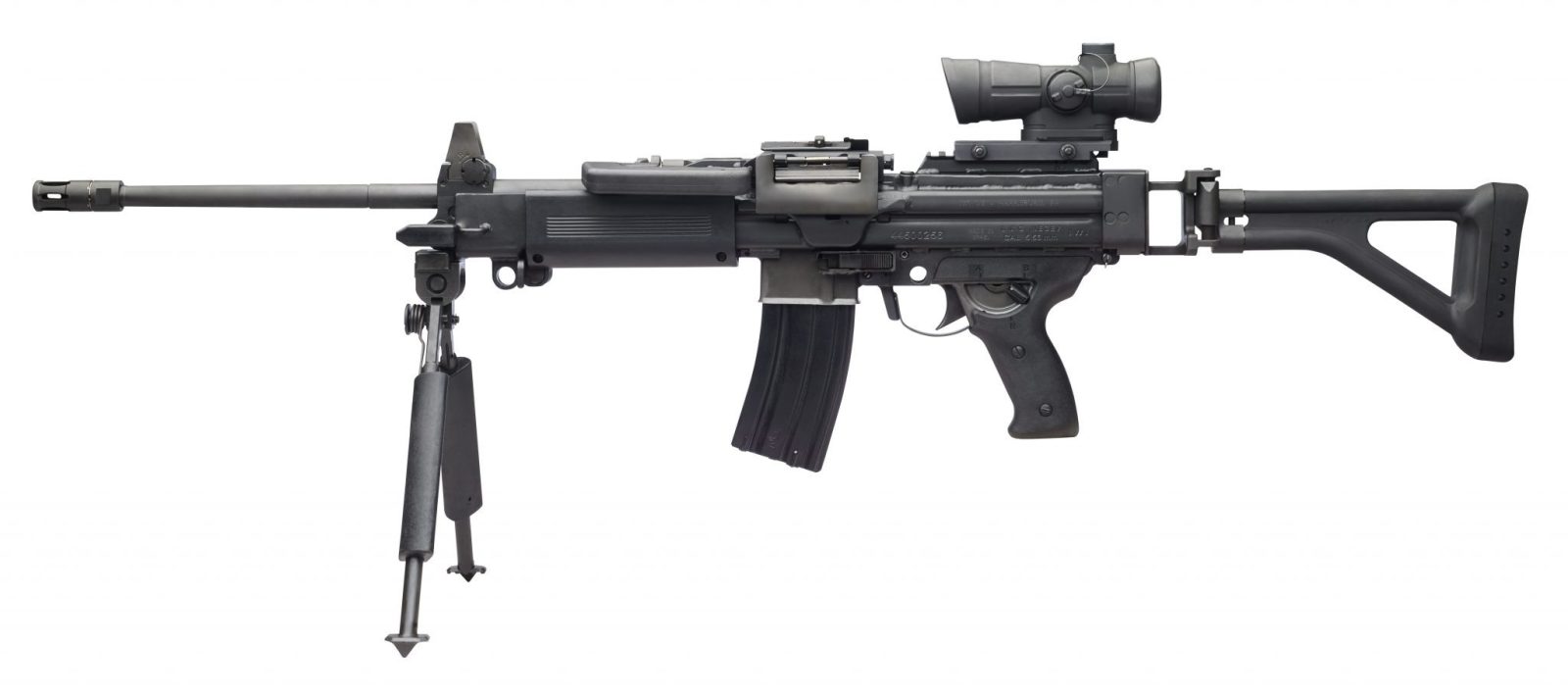
Besides the IDF, numerous other countries have also adopted and/or are using the Negev in some capacity, including; Argentina, Brazil, Cyprus, Columbia, Estonia, Georgia, India, Paraguay, Thailand and Vietnam. So here’s the question, instead of making yet more copies of the MINIMI and M-249, or dreaming up complete fantasy LMG models, why don’t airsoft manufacturers give us replicas of excellent real-steel weapons like the Negev? Wouldn’t that make airsoft an even more fun, interesting, and immersive, experience?
10. Armalite AR-18 Assault Rifle
The ArmaLite AR-18 was a gas-operated assault rifle chambered for the 5.56×45mm cartridge (.223 Remington in civilian clothes) designed at by Arthur Miller, Eugene Stoner, George Sullivan, and Charles Dorchester in 1963 as a lower-cost alternative to the AR-15 design, which had just been selected by the U.S. military as the M16. Like the AR-15, the AR-18 design also began as a 7.62mm NATO calibre rifle that was scaled down to 5.56x45mm (in this case, it was derived from the AR-16 rifle).
While the AR-18 was never adopted as the standard service rifle of any nation, its short-stroke gas piston system has influenced, or been copied by, many modern military rifles, including; the British SA80 / L85, the Singaporean SAR-80 and SR-88, the MagPul/Bushmaster ACR, the Belgian FN-2000, the Japanese Howa Type 89, the German G36 and HK433, the CZ Bren 605, and many others. Indeed, the widespread influence of the AR-18’s gas system on later firearms designs led Larry Vickers to describe the AR-18 as “the most successful failure in military small-arms history.”

Lower cost, more reliability and easier maintenance weren’t the only motivations behind the development of the AR-18 though. By the time the AR-15 / M-16 was adopted by the US Army, the ArmaLite company had been sold off to become an independent entity, and all of the rights to the AR-10 and AR-15 designs had also been sold to Colt. So, if ArmaLite was going to be successful then the company needed some new designs – and one’s which wouldn’t infringe upon Colt’s rights to the AR-10/AR-15 system.
The AR-18 nonetheless never achieved anywhere near the success of the AR-15/M-16 platform. It suffered from the fact that its less-expensive stamped metal construction wasn’t as smooth and “pretty” as the forged metal build of the M-16, and the fact that the ArmaLite company wasn’t capable of full-scale production – the AR-18s the company produced were more like advanced prototypes than production rifles. Even worse, trials by the US Army in 1964, the British in 1966, and the US Army Infantry Board at Fort Benning again in 1969 found that, although the basic design was sound, the rifle needed additional development work to iron out some kinks before it would be a fully military-ready weapon.
Having failed to gain any traction with the US or British militaries, the AR-18 was sold internationally to military, law enforcement and security agencies. One place where the AR-18 did make something of an impact was Northern Ireland. Through various illicit channels, the Provisional Irish Republican Army (IRA) terrorist organization obtained quantities of the AR-18 (known colloquially simply as “the Armalite”), and for a time the weapon became an important symbol of IRA power in their campaign against the British government. Certainly being associated with terrorists as their weapon of choice couldn’t have done the AR-18s publicity any favors, but on a perhaps better note the “Armalite” also got a name-drop in the 1981 hit single “Invisible Sun” by the world famous rock group The Police.

To make up for the shortfalls in military sales, ArmaLite had decided in 1968 to also produce and market a semi-auto only version for civilian use, known as the AR-180. However, civilian shooters didn’t seem to get much more enthused about the AR-180 than the military had about the AR-18, and sales were sluggish through-out the 1970s and ’80’s. Even appearances in the James Bond movie “For Your Eyes Only”, or as Arnold Schwarzenegger’s weapon of choice for shooting up a police station in “The Terminator” were not enough to catch up to the sales volumes of Colt’s AR-15 – or the alluring attractiveness of the Teutonic maidens from Heckler & Koch.
Nonetheless, the civilian sporter rifle version of the AR-18 in particular refuses to die. From 2001-2007 Eagle Arms (the new parent/guardian of the ArmaLite brand) produced an improved version of the AR-180 called the AR-180B. The AR-180B did nonetheless offer several improvements over the original AR-180, most notably in having a polymer lower receiver that accepted STANAG AR magazines (rather than the original proprietary type), and a fixed buttstock. After market accessories such as buttstock adapters and Picatinny scope / optic mounts also helped to bring the rifle up-to-date and make it a more adaptable platform. Unfortunately, all of this was not enough and production of the 180B ended because of poor sales.

The most recent chapter in the AR-18 / AR-180 history began in 2019 when the US retailer Brownells, Inc. released the BRN-180 complete upper assembly. This is a new take on the AR-180 design, built around an AR-18 short-stroke piston system designed to be fitted to mil-spec AR-15 lower receivers. Due to popular demand, Brownells has also since began to offer an AR-15 lower that more closely mimics the style of the original AR-18/AR-180 design. Ironic, isn’t it?
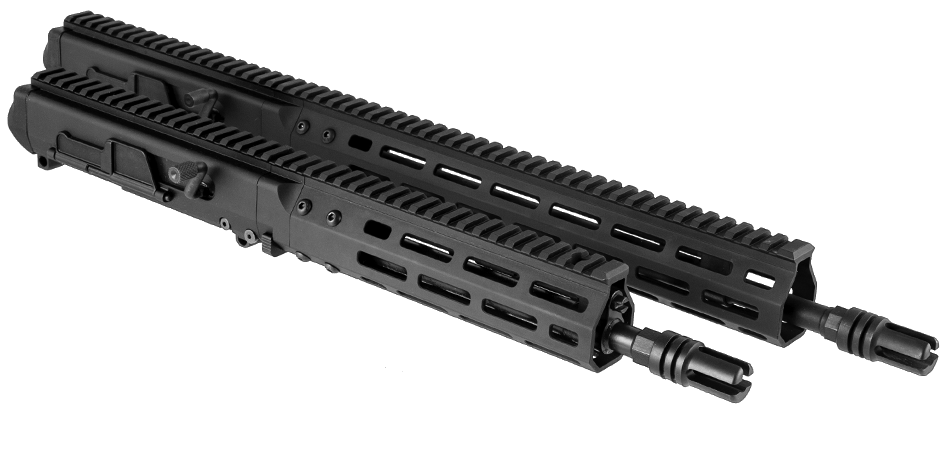
So now all that’s missing is an airsoft replica of the AR-18 – perhaps with modernized options in the way of the AR-180B and the BRN-180 – to complete the saga. By the way, once upon a time in airsoft there was an AR-18 replica – the classic JAC AR-18…
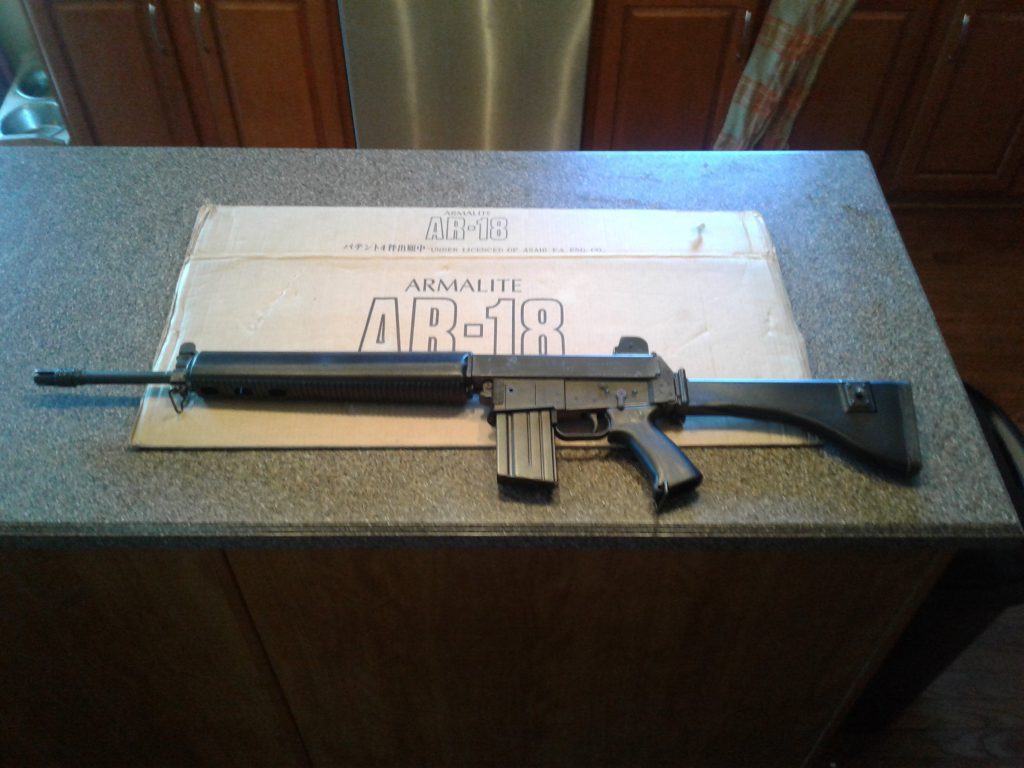
So, what do you think of our list? Are we completely crazy? See something that makes you think, “Yeah, why the hell don’t we have THAT?” What would be your suggestions? At any rate, can we at least all agree that we’re sick and tired of seeing more and more of the same old same?! Happy skirmishing. Strike, Hold, Reload.